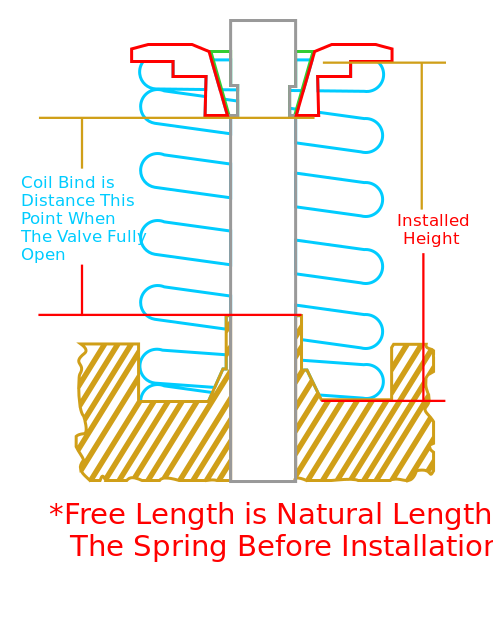The Valvetrain's Guardian: Understanding Max Spring Lift
The valve spring is the unsung hero of the valvetrain, responsible for closing the valve with lightning speed and precision. Before choosing a high-lift camshaft, it is absolutely critical to verify that your springs can handle the travel. Calculating the maximum safe lift is the essential safety check that prevents catastrophic engine failure.
The Physics of the Coil
The calculation determines the remaining travel a spring has from its installed position before it becomes a solid block of metal.
Total Available Travel
This is the total distance the spring can compress from its installed height before the coils touch (coil bind).
Maximum Safe Lift
To ensure longevity and prevent failure at high RPM, a safety margin is subtracted from the total available travel.
The Coil Bind Safety Margin: Your Engine's Insurance
Coil bind is a catastrophic event where the spring fully compresses and becomes a solid object. The resulting shockwave can destroy valvetrain components.
Why is it Needed?
At high RPM, spring dynamics become chaotic. The safety margin (typically ~1.5mm or 0.060") provides a crucial buffer to prevent the spring from binding during harmonic vibrations and valvetrain flex.
Consequences of Failure
Ignoring the safety margin can lead to bent pushrods, broken rocker arms, shattered retainers, or a dropped valve—any of which can result in complete and catastrophic engine destruction.

